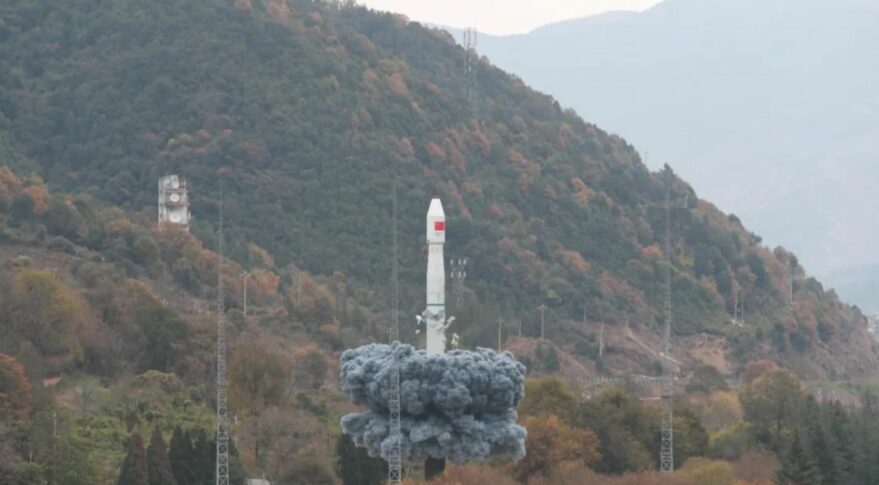HELSINKI — China launched a Long March 11 solid rocket from Xichang early Friday, completing a campaign of seven orbit launch attempts in just over a week which included the debut of two new launch vehicles.
The Long March 11 rocket lifted off at 1:17 a.m. Eastern (0617 UTC) Dec. 16, sending the Shiyan-21 satellite into orbit. The China Aerospace Science and Technology Corporation (CASC) announced launch success less than 30 minutes after liftoff.
Little was revealed about the Shiyan-21 satellite, with CASC stating only that it was developed by its subsidiary, the Shanghai Academy of Spaceflight Technology (SAST).
Shiyan series satellites are believed to be used to pilot new technologies in space. State media Xinhua reported that the newly launched satellite will be used for “in-orbit verification of new space technologies,” adding that Shiyan means “experiment” in Chinese.
The launcher was provided by the China Academy of Launch Vehicle Technology (CALT), another major entity under CASC.
The mission marked the 15th launch of the 20.8-meter-long, 2-meter-diameter and 58-metric-ton four-stage solid Long March 11. Of these, 11 have taken place at national spaceports Jiuquan and Xichang, with four more conducted from converted barges out on the Yellow Sea. The Long March 11 uses a cold launch system, which sees it expelled from its canister before igniting.
👀Check out Long March 11’s unique way of launch. Ejection from a cylindrical cell before engine firing. https://t.co/YkunCusqsE pic.twitter.com/glpBbaiE0K
— China ‘N Asia Spaceflight 🚀🛰️🙏 (@CNSpaceflight) December 16, 2022
The launch also completed a flurry of seven Chinese launches across a little more than nine days, and just 36 hours after the previous launch from Xichang, which saw a hypergolic Long March 2D rocket launch a fourth group of three Yaogan-36 reconnaissance satellites.
The intense period of launch activity kicked off at 0115 UTC Dec. 7 at Jiuquan, seeing a successful second flight of the Kuaizhou-11 rocket for CASC sister group CASIC, more than two years after the failure of the first launch. The launch put the VHF Data Exchange System (VDES) test satellite into orbit as part of the Xingyun constellation.
The route to operational status for Kuaizhou-11 may also have been hindered by an explosion at a CASIC site at Jiuquan.
This was followed by the launch Dec. 8 of the Gaofen-5 (01A) hyperspectral imaging satellite on a Long March 2D from Taiyuan, north China, with the first launch of the Jielong-3 solid rocket from a converted barge in the Yellow Sea 12 hours later.
Launches of the Shiyan-20 A and B satellites on a Long March 4C and Zhuque-2, a failed attempt by private firm Landspace to become the first to fly a methane-fueled rocket to orbit, took place at Jiuquan on Dec. 12 and 14 respectively.
The launches mean China has launched 62 times this year and already surpassed its national record of launches in a calendar year, 55, set in 2021. China’s prior record had been 39 launches, reached in both 2018 and 2020.
51 of these launches have been Long March launches conducted by CASC, all successfully. The Jielong-3, Kuiazhou-11 and Zhuque-2 are among the 11 non-Long March rockets launching from China this year, along with four launches of the smaller Kuaizhou-1A, the debut of the ZK-1A from the Chinese Academy of Sciences, a third consecutive failure of iSpace’s Hyperbola-1 and two launches of Galactic Energy’s Ceres-1 solid rocket.
CASC stated early in the year that it intended to launch more than 50 times in 2022, including a series of missions to complete the Tiangong space station.
At press time, the U.S. had conducted 82 launches so far in 2022, including Rocket Lab Electron launches. SpaceX’s Falcon 9 accounts for 55 of these, and another pair scheduled for later Dec. 16.

